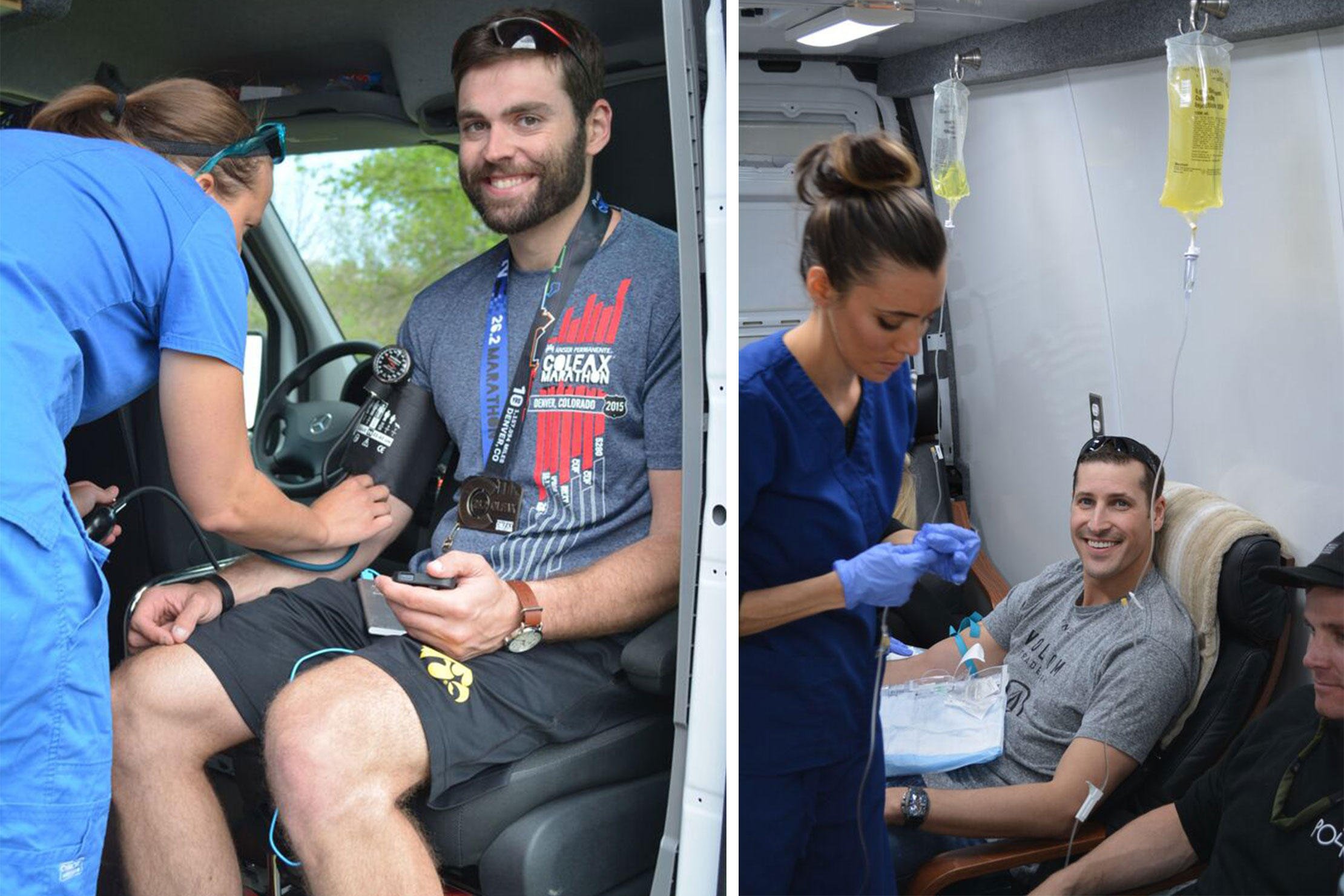After the BolderBoulder 10K in May, participants meandered through a postrace festival lined with vendors offering samples of coffee and fare from local food vendors.
 They could also treat themselves to an IV drip.
They could also treat themselves to an IV drip.
You may unsubscribe at any time.
Your Privacy Rights | About Us
No, it wasn’t from the medical tent. At the Onus iV Hydration clinic’s mobile unit, runners had the option to get a saline drip infused with vitamins, minerals, and pain medications with the hope of jumpstarting the recovery process.
Clinics like Onus iV Hydration—which formed its business in December 2014, takes its portable facility to races around Colorado, and will open its brick and mortar location next month in downtown Denver—are beginning to pop up around the country in cities like Chicago and New York City.
The service resembles clinics like Hangover Heaven in Las Vegas, which markets drips to drinkers with morning-after regrets. Some spas also offer drips to help people beat jet lag or the flu.
The practice of using IVs as a means of rehydration for athletes isn’t new. Healthy elites have reportedly gotten saline-only drips for recovery for at least 20 years. What sets Onus iV Hydration apart is that it provides nutrient-enhanced drips targeted at regular endurance athletes looking to speed recovery.
While there is some research, there is currently no concrete evidence to support the claim that getting a drip speeds recovery; some experts think it’s no more effective than taking ibuprofen with a sports drink. But if you come across a clinic like Onus iV Hydration after a race in the future and you’re tempted to try it, here’s what you should consider before getting hooked up.
THE IDEA BEHIND THE BAGS
When it comes to recovery, the faster an athlete can rehydrate, the better. Muscle recovery is delayed if you’re dehydrated. Replenishing fluids after a tough effort can be tricky, however. During hard workouts or races, blood flow to the stomach is redirected to the muscles. This reduction in blood flow to the stomach results in a decrease in the ability to digest and absorb nutrients. That’s one reason why, when runners chug a sports drink right after a race, they sometimes throw it right back up.
If the drink does stay down, only 50 to 60 percent of its vitamins and minerals are absorbed by the cells, nerves, and muscles that need them, according to Benjamin Wilks, M.D., an emergency medical physician and co-owner of Onus iV Hydration.
Because IVs bypass the GI tract, rehydration can happen at a faster rate without the risk of vomiting, and all of the nutrients in the drip are placed directly into the blood stream.
“Imagine trying to ingest a gallon of water after a race,” Wilks said. “It’s pretty much impossible, at least in the timeframe we would be able to rehydrate someone intravenously.”
Carwyn Sharp, Ph.D., a Colorado Springs-based exercise scientist who has studied the impact of nutrition on recovery in athletes, said oral hydration is sufficient for proper recovery in most cases. But when an athlete is very dehydrated, he does agree that IVs can boost recovery.
While Sharp hasn’t tried a clinic like Onus iV Hydration, the 2:46 marathoner did once require a saline drip (a blend of salt and water) in the medical tent because he didn’t hydrate properly during a marathon.
“After an hour or so, I was walking around the expo feeling 100 percent, like I hadn’t even run the marathon,” Sharp said.
Clinics like Onus iV Hydration offer a menu of drips that range from a basic bag of saline to a cocktail of vitamins, minerals, and medications, which is marketed to boost recovery even more. Customers can also pick and choose which nutrients they’d like pushed through the IV.
[“source-runnersworld”]





